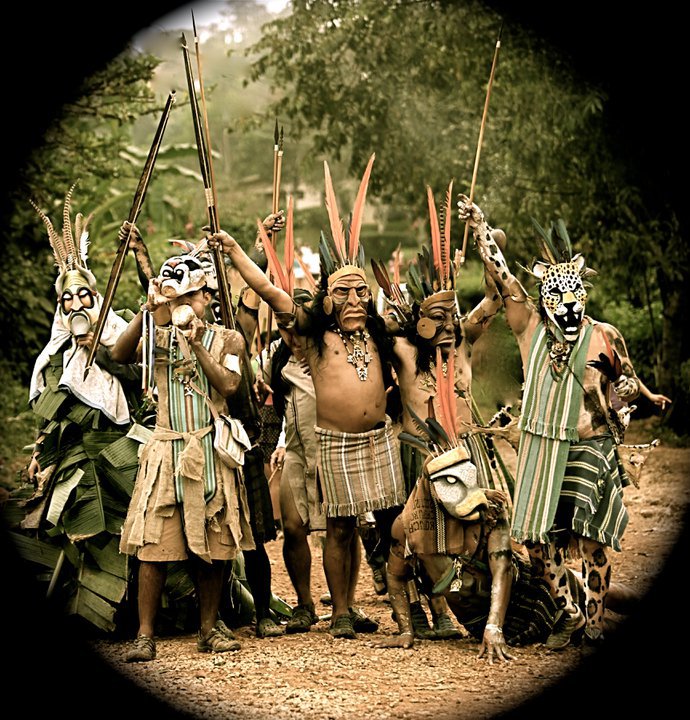BORUCA
Deep in the mountains of Costa Rica lie the ancestors of the Brunka in the Diquis delta kingdom. Over 600 years ago, the Brunka came face to face with invading Conquistadors. This encounter would shape the future of their people, as they held true to their own cultural beliefs and went to war to defend them. The Conquistadors called the Brunka "Diablos" ('devils' in Spanish) for not accepting the Catholic faith as their own, so the indigenous of the Diquis delta decided "Then devils we are!"

They carved elaborate masks from balsa trunks, dressed in massive leaves and vines, and went into battle proud to be the warriors they were. Over time, as their population declined, they hid in the mountainous terrain of their homeland...warring and holding their beliefs strong, fighting with their warrior masks. Every December, a 3-day festival called "El Juego de los Diablitos" (The Dance of the Little Devils) is held in Boruca. During this festival, they re-enact their version of the historic battle with the Conquistadors, in which the Brunka always win!
Much of the indigenous culture was lost over decades of change. It was only 30 years ago that modern members of the tribe were able to grasp this ancient culture and begin to bring it back. One individual in particular, took on the role of teacher and community leader, bringing the form of maskmaking into the modern day. The popularity of these masks has since exploded, and almost 85% of Brunka now work as artisans. What other isolated culture can claim that?
Costa Rica is a young nation with a short political history and few cultural groups indigenous to its borders. The Brunka are a rare example of an indigenous culture celebrating its art, standing firm in its traditions, and making its way forward in the modern world.
THE MASKS
THE LORE
Behind every mask lies a deeper meaning. From the symbolism of the jaguar, to the power of the true god the sun. Each has its own specific story and represents an aspect of our existence as humans, as well as the identity of the animal or celestial object. There are many styles of masks, but the majority fall into one of the following four categories:
DIABLO
The Diablo is the most traditional style of mask. Do not mis-interpret the diablo masks; the Brunka view these masks as a symbol of wellbeing and believe that they serve as protection from evil spirits. ‘Diablos’ are an identity the Brunka warriors claimed as they defended their cultural beliefs.
ECOLÓGICO
These masks highlight nature and animals that inhabit the jungle. They represent the essence of the jungle and spirits that live within it.
ECO-DIABLO
Eco-Diablos are a combination of the Diablo and the Ecologico style masks. The Diablo is portrayed in combination with nature; representing protection of the ecological system, particularly the animals surrounding the village. The Eco-Diablo is the great protector of all jungle spirits.
PRE-COLOMBIAN
These represent the time of Chief O’sa and the indigenous of the Diquis valley, prior to Spanish influences. Typically, these masks incorporate gold adornments and ancient symbolism.
Professional photography by Jonathan Cooley, Costa Vida Photography. All images are the property of the Ojos del Jaguar co-op and Costa Vida Photography. 2013 All Rights Reserved. Any unauthorized use of the images on this site, in part or whole, is strictly prohibited.









